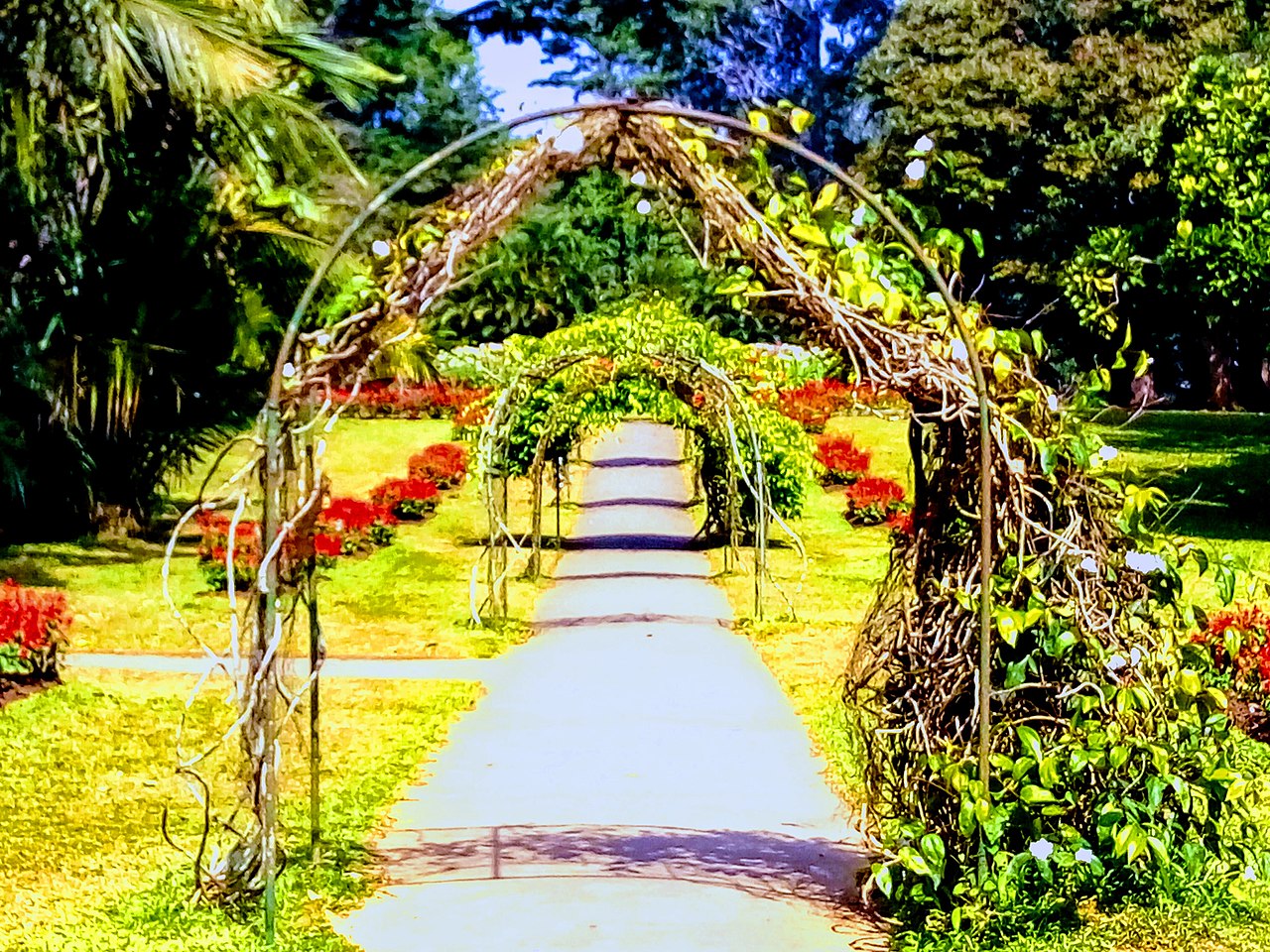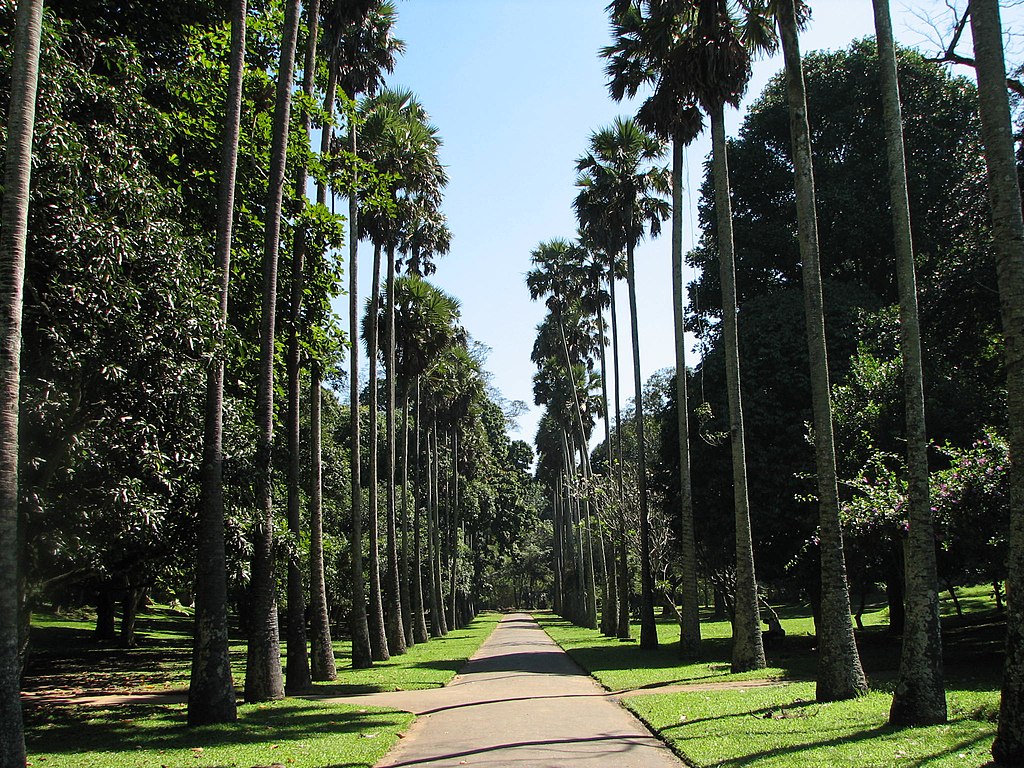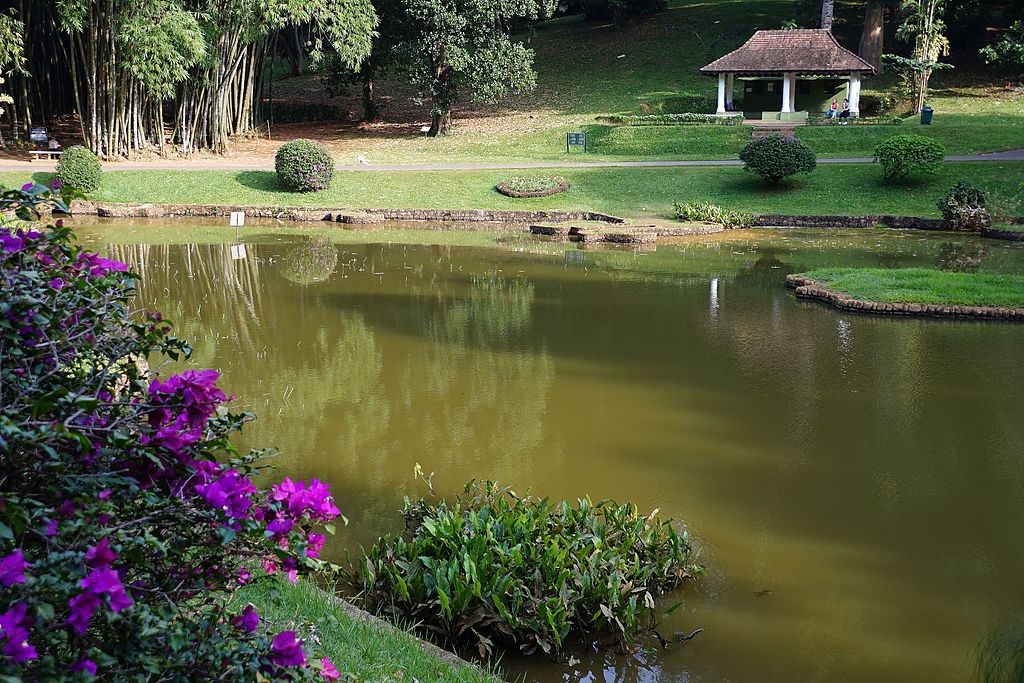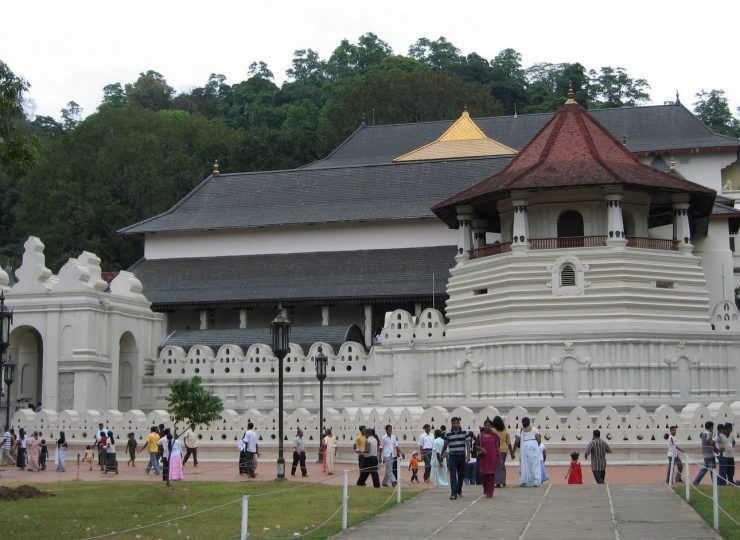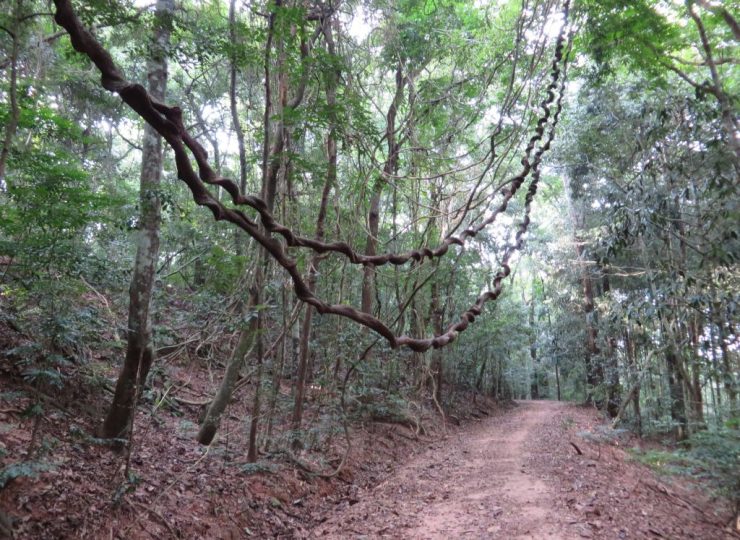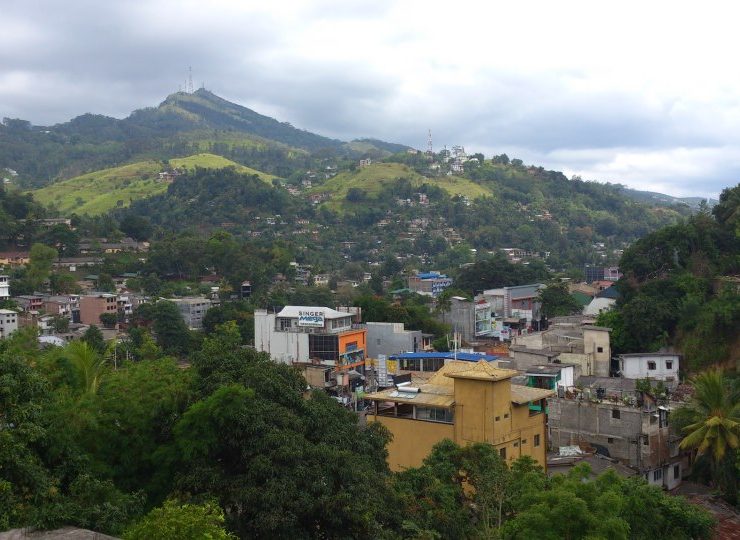The Gardens is renowned for its collection of a variety of orchids. It includes more than 300 varieties of orchids, spices, medicinal plants and palms trees. Attached to it is the National Herbarium. The total area of the botanical garden is 147 acres (0.59 km2), at 460 meters above sea level, and with a 200 day annual rain fall. It is managed by the Division of National Botanic Gardens of the Department of Agriculture.
History of the Royal Botanical Gardens
The present Royal Botanic-Gardens at Peradeniya was established in 1821, six years after the final occupation of the Kandyan Kingdom by the English. The site is less than four miles from Kandy on the Colombo road, and occupies a loop of the river Mahaweli which surrounds it on all sides except the south. where it is bounded by the high road The area. nearly 150 acres in extent, is beautifully undulated, its average elevation above sea-level being about I,540 feet. The climate is hot, moist and very equable the mean annual temperature is about. 77° F , Aril and May being the hottest and December coldest months. Rain falls on about 200 days in the year, the annual rainfall-f in about 85 inches, it is pretty evenly spread through the year. but is heaviest in October and November and in June, at the full establishment of the N.E and S.W monsoons, respectively, February and March are the driest months, but even then there arc showers at no distant intervals.
Before its occupation as a Botanic Garden the greater part of the land had been a royal demesne occasionally occupied as a residence by the Kings of Kandy. The earth-mound and ditch along the south boundary ace still evident, and remains of stone buildings have been found, The name Pera= guava, and deniya = an en-closed place-indicates its use as a fruit garden, of which the existence of some very old mango trees is further evidence_ On another part of the site stood a small temple or flower shrine and priest’s house, abandoned„ however, before the formation of the Garden. Peradeniya was not the first botanic garden in Ceylon. The Dutch possessed one in Slave Island, Colombo, which indeed took its name from the Company’s slaves who worked and lived in it. This was neglected by the British, though the first English Governor, the Hon. Fred. North, who possessed a garden attached to his villa at Peliyagoda, on the Kelani near Coliombo., made some attempt to give it a botanical character and appointed (in 1879) one Joseph Jonville, superintendent. The Hon. East India. Company’s garden at Calcutta was at this time nourishing under the eminent botanist Roxburgh, and some exchanges appear to have been made with that establishment. But it was not till 1810 that Sir Joseph Banks, Pres. R. S., suggested and drew up a plan for a proper botanical garden in Ceylon. The site chosen was in Slave Island, and is still known as Kew. This powerful patron of botany also secured the transference from Canton of Mr W. Kerr, who was appointed “Resident Superintendent and Chief Gardener.”


